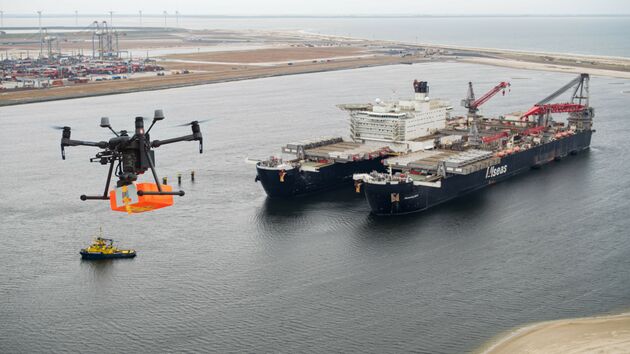Amsterdam Drone Week reports that the Port of Rotterdam has seen a substantial increase in drone activities since its inception of a U-Space prototype over a year and a half ago. “Initially launched with around 15 drone operators, the system now supports over 50, with nearly 300 flight requests processed in the past four months alone,” Amsterdam Drone Week says. “These requests primarily involve inspections, mapping, and marketing, with each flight potentially lasting up to eight hours.”
The Port of Rotterdam intends to integrate drones into its operations to enhance efficiency and reduce environmental impact. Drones are currently being used at the port for asset inspection, security, environmental monitoring, and cargo transport.
However, the surge in drone usage has brought challenges, particularly in managing potential conflicts between flights. “Nearly 10 percent of the recent flight requests involved potential conflicts, all of which were resolved either through software or by the intervention of the Port’s Airspace Managers,” Amsterdam Drone Week reports.
The article explains how the European Union Aviation Safety Agency (EASA) and the Dutch Ministry of Infrastructure and Water Management visited the Port of Rotterdam last June to review the U-Space prototype. “The discussions focused on the integration of drone control software with UTM systems and the broader challenges of managing drone traffic in complex environments. This visit highlighted the importance of data availability, including information from manned aviation and non-cooperative drones, as well as the need for high-quality, standardised API services (U space),” Amsterdam Drone Week continues.
The collaboration with EASA is helping to refine the standards and certifications required for U-Space services, ensuring uniformity and safety across European airspaces. The Port of Rotterdam’s experiences and insights are feeding back into these regulatory processes, which helps shape the future of drone operations across Europe.
Amsterdam Drone Week says that as drone operations become more common, particularly beyond visual line of sight (BVLOS), the Port of Rotterdam is exploring ways to support operators flying near critical infrastructure, such as terminals within ground risk buffers. The article adds that the port is “working closely with drone consultancy firms to help operators navigate the complexities of flying in these sensitive areas, ensuring that all safety protocols are adhered to”.
Earlier this year, the port hosted the ‘U-Space Revolution in Rotterdam’ event, which drew 220 visitors from 15 countries. The event included live demonstrations of drones transporting heavy packages to vessels.
For more information
Port of Rotterdam drone programme
Image: Port of Rotterdam




